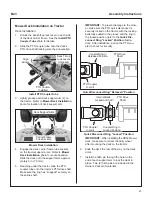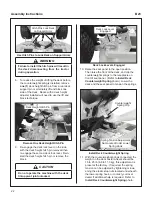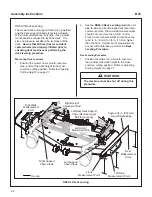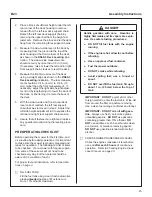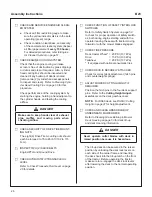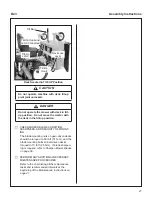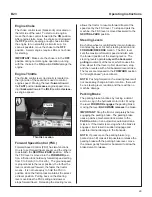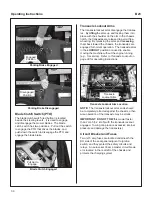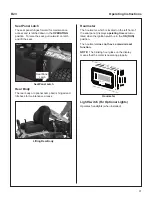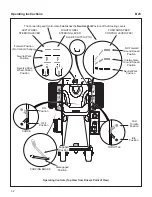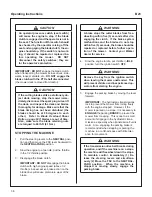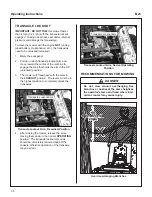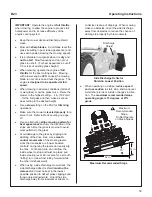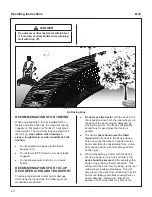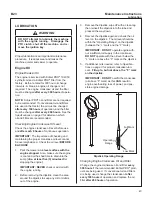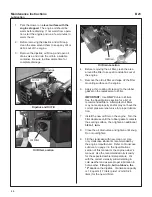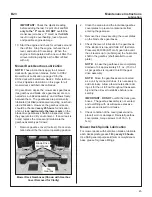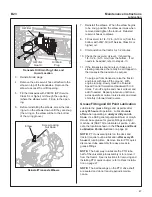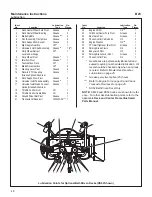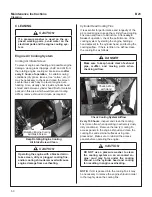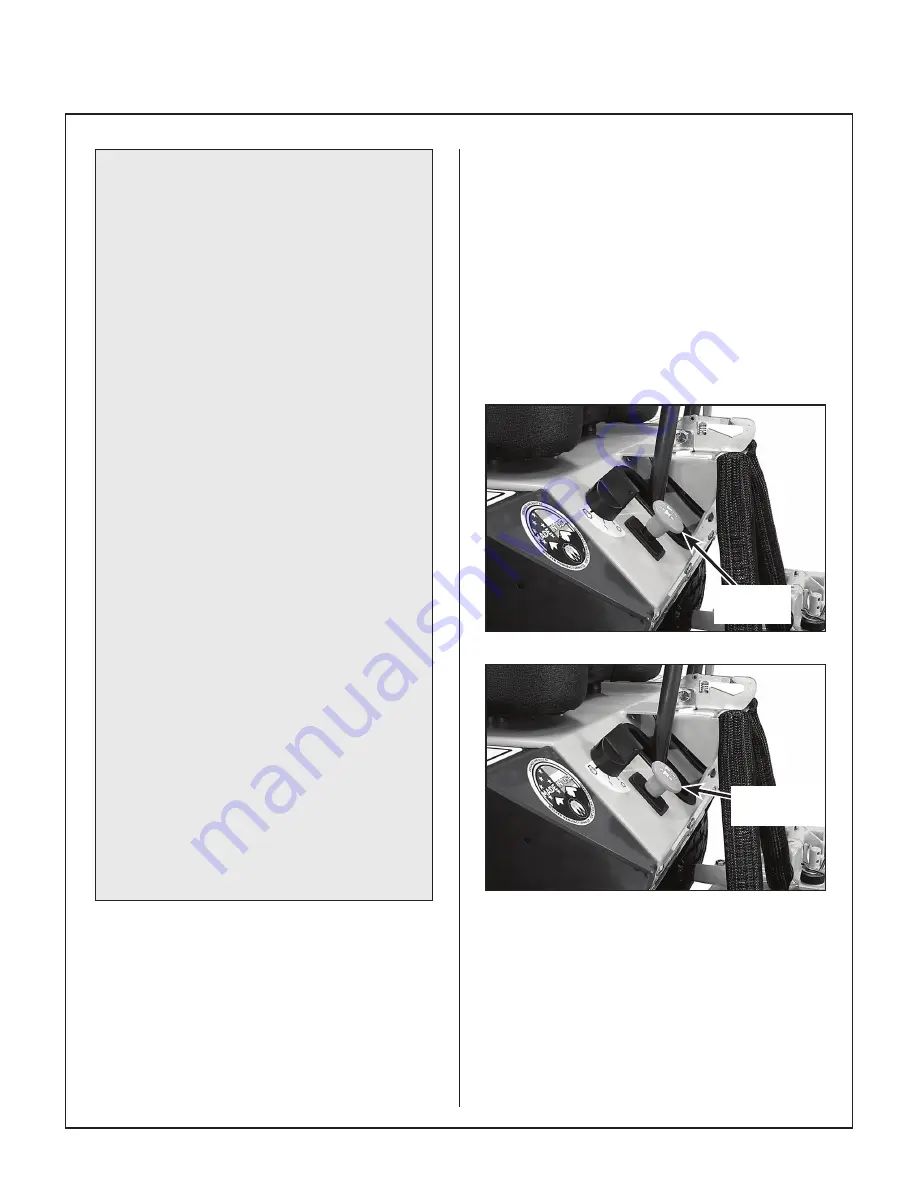
B23
Operating Instructions
35
GETTING STARTED RECOMMENDATIONS:
♦
Learn operation of the mower in an
open area away from buildings, fenc-
es, and ob structions. Learn opera-
tion on flat ground BEFORE operat
-
ing on slopes.
♦
Start maneuvering the mower with
SLOW engine speed and SLOW For-
ward Speed Control setting until fa-
miliar with all operat ing characteris-
tics.
♦
Remember it is not necessary to hold
the steering levers forward (a unique
Walker feature); always PULL on the
levers for steering or for reverse mo-
tion of the mower.
♦
Learn to operate the mower with your
left hand on the steering levers and
right hand on Forward Speed Con-
trol. The use of two hands on the
steering levers tends to cause over-
control.
♦
Learn to operate the steering levers
with smooth action. Jerky move-
ments are hard on the transmission
and lawn. For sharp turns, do not al-
low the inside wheel to stop and twist
on the grass. Pull the steering le ver
controlling the inside wheel into re-
verse for a smooth “rolling” turn (one
wheel roll ing forward while the other
rolls backward).
♦
Practice maneuvering the mower un-
til you can make it go exactly where
you are aiming.
♦
Remember, for an emergency stop,
or in case of loss of control, machine
movement can always be stopped
quickly by pulling the Forward Speed
Control into the NEU TRAL-PARK po-
sition.
ENGAGING THE BLADE DRIVE
1. Set the engine throttle at about 1/3 speed.
Do
not attempt to engage the blade clutch at
high engine speeds.
This will drastically
shorten drive belt life. Use only moderate
engine speed when engaging the blade clutch.
2. Engage the blade clutch by pulling out on the
blade clutch switch.
3. To disengage the blade clutch, reduce the
throttle to half speed or less and push in the
blade clutch switch.
Engaged
Position
Blade Clutch Engaged
Disengaged
Position
Blade Clutch Disengaged
NOTE:
The electronic Soft Start function of blade
clutch engagement normally protects the blade
drive from sudden engagement and shock loads,
but it is still a good operating practice to avoid
engaging the blades at high engine speeds.

